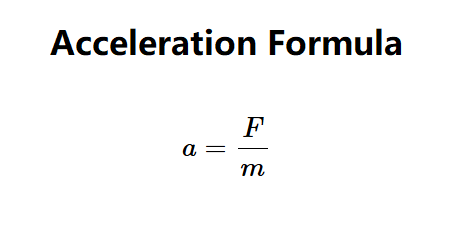 Home
Home
 Back
Back

Definition: Acceleration is the rate of change of velocity of an object, calculated using Newton's second law: \( a = \frac{F}{m} \).
Variables:
Details: Acceleration is a fundamental concept in physics, used to analyze motion in mechanics, engineering, and everyday applications like vehicle dynamics.
Tips: Enter the force in newtons or other supported units and the mass in kilograms or other supported units. Click "Calculate" to get the acceleration in multiple units (m/s², ft/s², km/s²). Results greater than 10,000 or less than 0.0001 will be displayed in scientific notation.
Q1: What is acceleration?
A: Acceleration is the rate of change of velocity, determined by the force applied and the mass of the object.
Q2: Why use Newton's second law?
A: It relates force, mass, and acceleration, providing a fundamental equation in classical mechanics.
Q3: What units are used?
A: Force can be in N, lbf, dyn, kN, or pN; mass in kg, g, lb, oz, or t; acceleration in m/s², ft/s², or km/s².
Q4: What if mass is zero?
A: The calculator will show an error, as division by zero is undefined.
Q5: How accurate is this calculator?
A: The calculator is accurate based on the formula, assuming the input force and mass are correct.